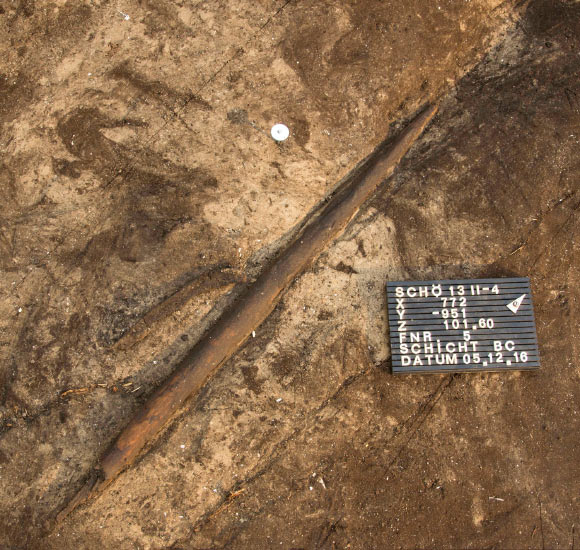300,000-Year-Old Wooden Throwing Stick Found in Germany
In Germany, a 300,000-year-old hunting stick able to kill big predators has been discovered. Used by the extinct human subspecies Homo heidelbergensis, the wooden throwing stick was capable of killing waterbirds and horses during the Ice Age.
It was achieved by conducting trials and looking at what would strike the target at full height, with the length of the throwing stick being 25 inches, and the speed of 98 feet (30 metres) per second.
German researchers have said the weapon was thrown like a boomerang, with one sharp side and one flat side, and spun powerfully around a centre of gravity.

But when in flight, the weapon, also referred to as ‘rabbit stick’ or ‘killing stick’, did not return to the thrower.
Instead, the rotation helped to maintain a straight, accurate trajectory which increased the likeliness of striking prey.

‘They are effective weapons over different distances, among other things when hunting water birds,’ said Dr Jordi Serangeli, professor at the Institute for Prehistory, Early History and Medieval Archaeology at the University of Tübingen in Germany.
‘Bones of swans and ducks are well documented from the find layer.
‘In addition, it is likely that larger mammals, such as horses that were often hunted on the shores of Lake Schöningen, were startled and driven in a certain direction with the throwing stick.’

Researchers uncovered the weapon during an archaeological excavation at the Schöningen mine in Lower Saxony, northern Germany. Schöningen has yielded by far the largest and most important record of wooden tools and hunting equipment from the Paleolithic,’ said Professor Nicholas Conard, founding director of the Institute of Archaeological Sciences at the University of Tübingen.
Detailed analysis by the researchers showed how the maker of this type of throwing stick used stone tools to cut the branches flush and then smooth the surface. The stick, carved from spruce wood, is around 25 inches (64.5cm) long, just over 1 inch (2.9cm) in diameter and weighs 264 grams.
This weapon also had fractures and damage consistent with that found on similar experimental examples.
For the first time, researchers say the study provides clear evidence of the function of such a weapon.
Late Lower Palaeolithic hominins in Northern Europe were ‘highly effective hunters’ with a wide array of wooden weapons that are rarely preserved, they say.
‘300,000 years ago, hunters had used different high-quality weapons such as throwing sticks, javelins and thrust lances in combination,’ said Professor Conard.
Researchers attribute the discovery to the ‘outstanding’ preservation of wooden artefacts in the water-saturated lakeside sediments in Schöningen.
‘The chances of finding Paleolithic artefacts made of wood are normally zero.
‘Only thanks to the fabulously good conservation conditions in water-saturated lakeside sediments in Schöningen can we document the evolution of hunting and the varied use of wooden tools.’ The discovery has been detailed further in Nature Ecology & Evolution.
